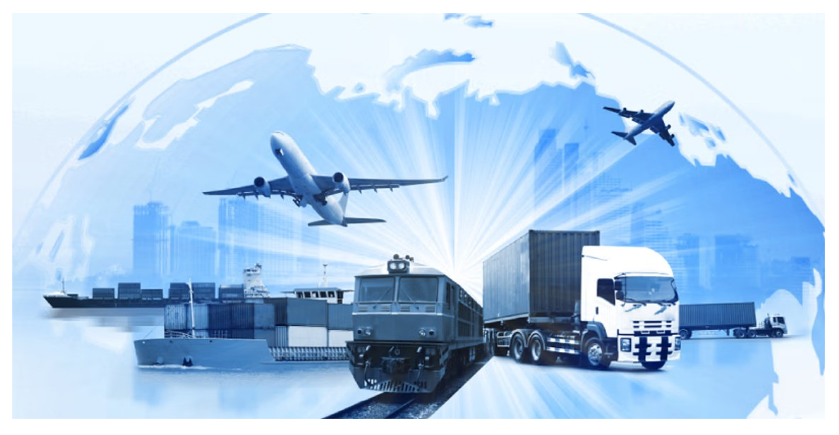Friday, 22nd December 2023
Lok Sabha Approves Trio Bills for Criminal Justice Overhaul
In News: Lok Sabha Unanimously Passes Three Bills for Revamping the Nation's Criminal Justice System, Replacing Outdated Colonial-Era Laws.
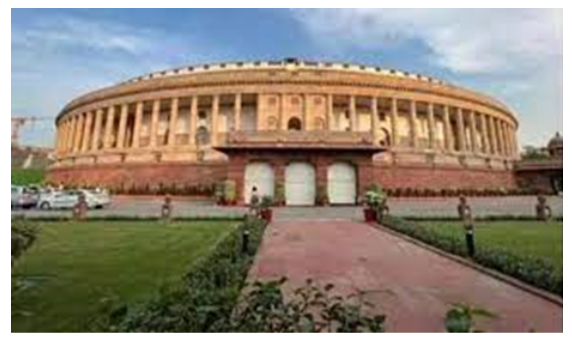
Need for New Legislation
- Colonial Legacy
- From 1860 to 2023, India's criminal justice system operated under British-imposed laws, reflecting outdated language and concepts unsuitable for contemporary social norms.
- Advancements in Technology
- Technological progress has introduced new dimensions to crime, evidence, and investigation, necessitating updates to legal frameworks.
- Simplification and Streamlining
- Over time, complexity in laws has led to confusion among legal practitioners, law enforcement, and the public.
- Simplifying and streamlining the legal framework can enhance transparency and understanding.
- Evidence Collection and Presentation
- The Indian Evidence Act predates modern forensic science, requiring reforms to align with technological advancements.
- Various Reports Highlighting the Need for Reforms
- Parliamentary Standing Committees on Home Affairs emphasized the essential review of the criminal justice system in multiple reports.
Background
In August 2023, the Union government introduced three Bills in Parliament to overhaul the criminal justice system: Bharatiya Nyaya Sanhita Bill, 2023 (BNS), Bharatiya Nagarik Suraksha Sanhita Bill, 2023 (BNSS), and Bharatiya Sakshya Bill, 2023 (BSB).
Bills Referred to Parliamentary Standing Committee
The Bills underwent review by the Parliamentary Standing Committee on Home Affairs, leading to recommendations for changes after three months of deliberation.
Dissents of Opposition Members
Opposition members dissented on the vernacular titles of the Bills, alleging a violation of Article 348. The committee, however, approved the Hindi titles.
Introduction of Revised Version
On December 12, the Bills were withdrawn from Parliament, and revised versions were introduced, notably the Bharatiya Nyaya (Second) Sanhita Bill [BNS II Bill].
Key Changes Under BNS II
BNS II introduces modifications in defining life imprisonment, addressing terrorist acts, criminal conspiracy, mob lynching, organized crimes, sedition, community service, and sexual offenses against women.
Rulings of the Supreme Court
BNS II aligns with Supreme Court decisions, addressing issues such as adultery, penalties for murder or attempt to murder, and sexual offenses against women.
Indian Penal Code (IPC), 1860
The IPC, drafted in 1860 and effective from January 1, 1862, serves as India's primary criminal code, encompassing comprehensive provisions for criminal law and punishments.
Criminal Justice System
- The criminal justice system comprises institutions, laws, procedures, and processes designed to maintain social order, prevent and control crime, and ensure accountability for criminal offenses.
- involves stages from investigation and arrest to trial and potential punishment, aiming to uphold the rule of law, protect individual rights, and maintain public safety.
Source: IT
Integration of AI and Machine Learning in the Space Industry
In News: The Indian Government applauds ISRO's significant progress in incorporating AI and ML in space exploration.
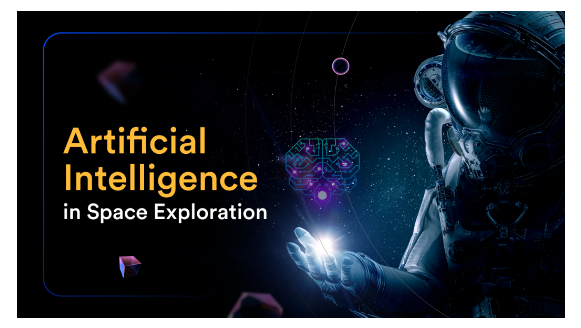
AI and ML Applications in Diverse Space Sectors
- Space Exploration and Robotics
- AI-driven robots and rovers autonomously explore distant planets, while ML aids in identifying celestial objects and hazards in space images.
- Satellite Operations
- ML analyses satellite images for Earth monitoring, and AI predicts component failures, improving maintenance schedules.
- Spacecraft Systems
- AI monitors spacecraft health, predicting failures, and ML optimizes resource usage during missions.
- Data Analysis and Pattern Recognition
- AI processes astronomical data for celestial discoveries, and ML distinguishes signals from space noise.
- Mission Planning and Decision Making
- AI assesses mission risks, aiding decisions, and ML enables real-time adaptation to unexpected situations.
- Optical Communications Optimization
- AI and ML refine optical communication systems, maximizing data transmission rates for interplanetary missions.
- Quantum Computing for Space Challenges
- AI harnesses quantum computing for complex calculations, enhancing security for space missions.
Major Challenges in AI and ML for Space
- Computational Limitations
- Spacecraft's limited computational power requires optimized AI algorithms.
- Robustness and Reliability
- Space environments pose challenges to AI system reliability and robustness.
- Training Data Limitations
- Gathering specific training data for space missions is challenging.
- Ethical and Legal Considerations
- Ethical and legal concerns arise in AI decision-making and data privacy.
Future Directions
- Edge Computing and Onboard Processing
- Prioritize onboard processing to reduce dependency on Earth-based resources.
- Interdisciplinary Collaboration
- Encourage collaboration among diverse fields for comprehensive problem-solving.
- Ethical Frameworks and Governance
- Develop global ethical guidelines addressing AI decision-making and privacy in space missions.
|
UPSC Previous Year Questions Prelims (2016) Q. Consider the following statements: The Mangalyaan launched by ISRO
Which of the statements given above is/are correct? (a) 1 only Ans: (c) Mains (2019) Q. What is India’s plan to have its own space station and how will it benefit our space programme? |
Source: PIB
Climate Finance: India's Call for Increased Funds
In News: CEA reaffirms India's position, emphasizing the need for increased climate funds from developed nations.
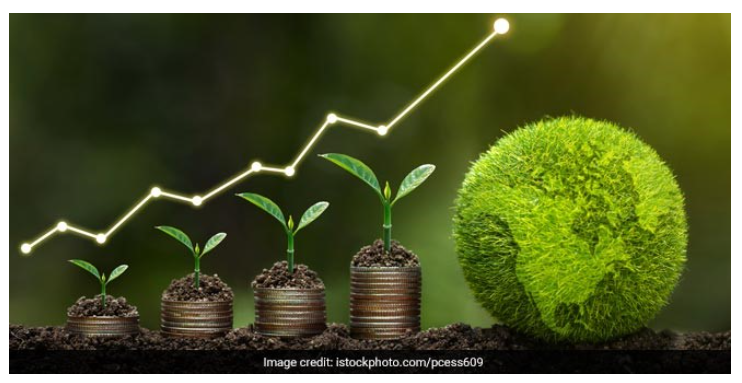
Understanding Climate Finance
- Definition
- Climate finance encompasses financial support—whether local, national, or transnational—sourced from public, private, and alternative channels.
- Its goal is to aid mitigation and adaptation efforts addressing climate change.
- Global Agreements
- The UNFCCC, Kyoto Protocol, and Paris Agreement emphasize financial assistance from Developed Countries to Developing Countries, aligning with the principle of "Common but Differentiated Responsibility and Respective Capabilities" (CBDR).
- COP26 witnessed new financial commitments to support adaptation in developing countries.
- Significance
- Climate finance is crucial for both mitigations, requiring substantial investments to reduce emissions, and adaptation, needing resources to cope with climate change impacts.
- Recognizing the diverse contributions and capacities of countries, developed nations are urged to lead in mobilizing climate finance.
- Role in Temperature Limitation
- Climate finance plays a critical role in addressing climate change issues and achieving the goal of limiting the Earth's temperature rise to below 2 degrees Celsius, as projected by the 2018 IPCC report.
USD 100 Billion Target and its Importance
- Origins
- In 2009, COP15 set a target of USD 100 billion annually by 2020, formally recognized at COP16.
- COP21 extended the goal through 2025, and COP26 confirmed the commitment to double adaptation finance by 2025.
- Importance
- The USD 100 billion target is essential for meaningful mitigation actions, transparency, and addressing the needs of developing countries.
- Post-COP26, a consensus emerged to double adaptation finance, emphasizing the balance between adaptation and mitigation efforts.
Green Financing
- UNFCCC Framework
- UNFCCC established a financial framework to allocate resources to developing nations.
- The Global Environment Facility (GEF) has served as the financial mechanism's operating institution, with the Green Climate Fund (GCF) designated as an operating entity.
- Other Funds
- Parties established special funds, including the Special Climate Change Fund (SCCF), Least Developed Countries Fund (LDCF), and the Adaptation Fund (AF).
- These funds align with the Paris Agreement.
India's Climate Finance Initiatives
- National Adaptation Fund for Climate Change (NAFCC)
- Established in 2015, NAFCC supports climate change adaptation costs for vulnerable Indian states and Union Territories.
- National Clean Energy Fund
- Created to promote clean energy, the fund supports research and development in both fossil and non-fossil fuel-based sectors.
- National Adaptation Fund
- Established in 2014, this fund operates under the Ministry of Environment, Forests, and Climate Change to bridge the gap between climate change adaptation needs and available funds.
The Path Ahead
- Global Cooperation
- Developed countries must collaborate with developing nations, facilitating clean energy transitions and climate-resilient infrastructure financing to meet the $100 billion goal.
- Political Commitment
- Sustaining political commitment is crucial for generating new finance, ensuring targeted emission reductions, and addressing vulnerabilities.
- Learning and Improving
- Drawing lessons from recent experiences, particularly with the Green Climate Fund, is essential for ongoing efforts in climate finance.
|
UPSC Previous Year Questions Prelims (2016) Q. With reference to the Agreement at the UNFCCC Meeting in Paris in 2015, which of the following statements is/are correct?
Select the correct answer using the code given below: (a) 1 and 3 only Ans: (b) EXP:
Mains (2021) Q. Describe the major outcomes of the 26th session of the Conference of the Parties (COP) to the United Nations Framework Convention on Climate Change (UNFCCC). What are the commitments made by India in this conference? |
Source: BS
Post Office Bill 2023 - Edukemy Current Affairs
In News: Recently the Parliament passed the Post office bill 2023.

Key Provisions of the Bill
- Objective
- The primary objective of the Bill is to "consolidate and amend the law related to the Post Office in India," encompassing a range of services beyond traditional mail delivery.
- Interception Authority
- Section 9 empowers the Centre, through notification, to authorize officers for the interception, opening, or detention of shipments in the interest of state security, friendly foreign relations, public order, emergencies, public safety, or compliance with other laws.
- Customs Transfer
- The Bill allows post officers to transfer postal items to customs authorities if suspected of containing prohibited items or if subject to duty.
- Exemptions from Liability
- Section 10 exempts the Post Office and its officers from any liability for loss, mis-delivery, delay, or damage during services, except as prescribed.
- Offences and Penalties
- The Bill eliminates many offenses and penalties outlined in the 1898 Act, retaining only non-payment cases, which are recoverable as arrears of land revenue.
- Exclusive Privileges
- The Bill removes Section 4 of the 1898 Act, which granted the Centre exclusive privileges for transporting all letters by post.
- Inclusion of Private Courier Services
- The 2023 Bill, for the first time, regulates private courier services, bringing them under its regulatory purview.
- Extended Powers of Director General
- The Bill extends the authority of the Director General of Postal Services beyond postal operations.
- They are now empowered to oversee activities related to extra services specified by the central government and establish fees without parliamentary approval.
Source: BL
Polar Stratospheric Clouds (PSC)
In News: Recently, rare Polar stratospheric clouds have been observed over Scotland, northern England, and the West Midlands by weather watchers.

Polar Stratospheric Clouds (PSC): A Brief Overview
- Formation
- Also known as nacreous clouds or mother of pearl, owing to their iridescence.
- These clouds develop in extremely cold conditions over Polar Regions, situated within the stratosphere at an altitude of around 12-19 miles (19-31 km), far surpassing the height of ordinary clouds.
- Unlike more common clouds, PSCs consist of smaller ice particles, contributing to their unique appearance through light scattering.
- PSCs typically emerge for the first time in January
Impacts of PSCs
- The frequency of these clouds serves as an indicator of potential ozone depletion, playing a pivotal role in stratospheric chemistry.
- PSCs create a surface for chemical reactions where initially harmless forms of chlorine transform into reactive, ozone-depleting forms.
- Additionally, they eliminate nitrogen compounds that would otherwise mitigate the destructive effects of chlorine on the ozone layer.
Source: IT
RAMP Programme - Edukemy Current Affairs
In News: The Minister for Micro, Small & Medium Enterprises (MSME) recently inaugurated three sub-schemes as part of the RAMP programme.
About the RAMP Programme
The Raising & Accelerating MSME Performance (RAMP) program, supported by the World Bank, was launched in 2022 with the aim of enhancing the performance of micro, small, and medium enterprises (MSMEs) in India.
Objectives
- Improve access to markets and credit for MSMEs.
- Strengthen institutions and governance at central and state levels.
- Enhance centre-state linkages and partnerships.
- Address issues related to delayed payments.
- Facilitate the transition to greener practices for MSMEs.
The National MSME Council, established by the Ministry, serves as the administrative and functional body for the RAMP Programme.
Sub-schemes under RAMP
- MSME GIFT Scheme
- The MSME Green Investment and Financing for Transformation Scheme aim to assist MSMEs in adopting green technology through interest subvention and credit guarantee support.
- MSE SPICE Scheme
- The MSE Scheme for Promotion and Investment in Circular Economy supports circular economy projects with credit subsidy, contributing to the MSME sector's goal of achieving zero emissions by 2070.
- MSE ODR Scheme
- The MSE Scheme on Online Dispute Resolution for Delayed Payments is a pioneering initiative that combines legal support with modern IT tools and Artificial Intelligence to address instances of delayed payments for Micro and Small Enterprises.
Implementing Agencies
- Small Industries Development Bank of India (SIDBI) oversees the MSME GIFT and MSME SPICE schemes.
- National Informatics Centre Services Inc. (NICSI) manages the MSE ODR scheme.
What is Green Technology?
- Green technology refers to a type of technology recognized for its environmentally friendly characteristics, either in its production process or throughout its supply chain.
- It encompasses various fields of scientific research, including energy, atmospheric science, agriculture, material science, and hydrology.
Source: PIB
Valmiki Tiger Reserve - Edukemy Current Affairs
In News: The increase in the tiger population within Bihar's Valmiki Tiger Reserve (VTR) is attributed by authorities to a decline in human activities, notably restrictions on illegal mining within its eco-sensitive zone.

About Valmiki Tiger Reserve
- Location
- Situated at the India-Nepal border in the West Champaran district of Bihar, Valmiki Tiger Reserve forms the easternmost limit of the Himalayan Terai forests in India.
- It is the sole tiger reserve in Bihar, comprising Valmiki National Park and Valmiki Wildlife Sanctuary.
- Geographic Zone
- Located in the Gangetic Plains bio-geographic zone, the reserve is bordered by Nepal's Royal Chitwan National Park in the north and the Gandak River on the western side.
- Rivers
- Various rivers, including Gandak, Pandai, Manor, Harha, Masan, and Bhapsa, flow through different parts of the reserve.
- Forest Characteristics
- The region's forest combines bhabar and terai tracts, featuring Moist mixed deciduous, Open-land vegetation, Sub-mountainous semi-evergreen formation, Freshwater swamps, Riparian fringes, Alluvial grasslands, high hill savannah, and Wetlands.
- Vegetation
- Prominent flora includes Sal, rohini, sihor, teak, bamboo, semal, Mandar, shisham, Jamun, and Gular.
- Wildlife
- The reserve is home to large predators like Tigers, Leopards, and Indian Wild Dogs. Other fauna includes Leopard cat, fishing cat, Deer (sambar, barking deer, and hog deer), among others.
What is Project Tiger
- Launched in 1973 as a centrally sponsored scheme by the Government of India, Project Tiger is administered by the National Tiger Conservation Authority (NTCA).
- The initiative aims to ensure a viable population of the Bengal tiger in its natural habitats, protecting it from extinction, and preserving areas of biological importance as a natural heritage, representing the diverse ecosystems across the tiger's range in the country.
Source: DTE
The Bhoomi Rashi Portal - Edukemy Current Affairs
In News: The Bhoomi Rashi Portal now includes a total of 1467 projects of the National Highways Authority of India (NHAI), as stated by the Union Minister of Road Transport and Highways.
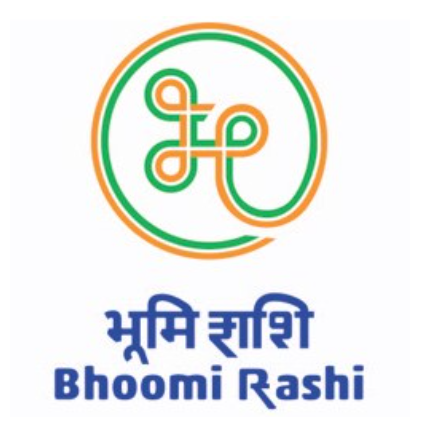
About Bhoomi Rashi Portal
- Overview
- The Bhoomi Rashi Portal is an e-Governance initiative launched by the Ministry of Road Transport and Highways to streamline the land acquisition process for National Highways in India.
- Objective
- The portal serves as a centralized platform for the online processing of land acquisition notifications, expediting the development of highway infrastructure across the country.
- Key Features
- Bilingual Application
- The portal offers a bilingual interface in Hindi and English for user convenience.
- Project Details
- It facilitates the input of project basic details, including land acquisition sanction details.
- Land Acquisition Locations
- Provides an interface for adding details of Land Acquisition locations, such as villages.
- Competent Authority for Land Acquisition (CALA)
- Includes an interface for CALA details, who is a revenue functionary appointed by the State Government for each NH Project.
- Notification Generation
- Offers an interface for generating land acquisition notifications.
- Land Details
- Provides an interface for recording land details.
- E-Office Management
- Incorporates organizational email IDs for all stakeholders involved in the process flow.
- Objections and Processing
- Includes an interface for raising objections and processing them.
- Compensation Determination
- Provides an interface for determining and finalizing compensation.
- Land Owners and Affected Parties
- Offers an interface for communication with landowners and affected parties.
- Reports Generation
- Facilitates the generation of various reports related to the land acquisition process.
- Integration with PFMS
- The portal is seamlessly integrated with the Public Financial Management System (PFMS) of the Ministry of Finance. This integration ensures real-time depositing of compensation directly into the accounts of affected or interested persons.
- Bilingual Application
What is the National Highways Authority of India (NHAI)?
- The NHAI is India's premier highway infrastructure development and management authority.
- Operating under the administrative control of the Ministry of Road Transport and Highways, it was established in February 1995 through the National Highways Authority of India Act, 1998.
- The NHAI is entrusted with the responsibility of developing, maintaining, and managing the National Highways network across the country.
Source: PIB
Mitochondrial Diseases - Edukemy Current Affairs
In News: A recent study indicates that approximately 25% of patients with mitochondrial diseases experience malnutrition.
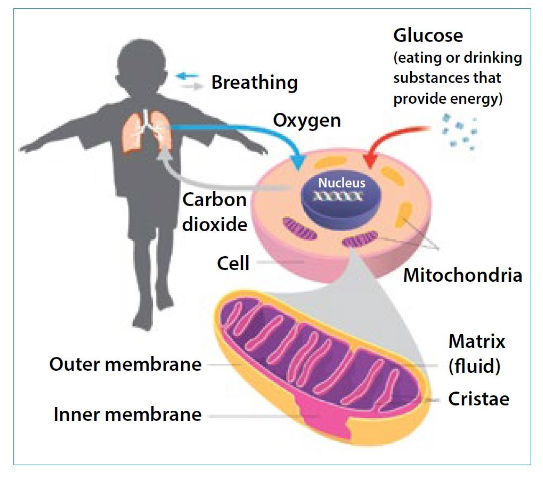
About Mitochondrial Diseases
- Overview
- Mitochondrial diseases encompass a group of conditions that impact the functioning of mitochondria in the body.
- What are Mitochondria?
- Mitochondria are membrane-bound cell organelles responsible for generating the majority of chemical energy essential for powering the cell's biochemical reactions.
- This energy is produced by combining oxygen with fuel molecules derived from food, such as sugars and fats.
- The chemical energy is stored in adenosine triphosphate (ATP), a small molecule.
- Notably, mitochondria and mitochondrial DNA are typically inherited exclusively from the mother.
- Impact on Cells
- Defective mitochondria result in insufficient energy within cells, leading to the accumulation of unused oxygen and fuel molecules, causing cellular damage.
- Mitochondrial diseases can affect various parts of the body, including the brain, nerves, muscles, kidneys, heart, liver, eyes, ears, and pancreas.
- Causes
- Primary mitochondrial diseases stem from genetic mutations and often manifest before the age of 20, with some being more prevalent in infants.
- Secondary mitochondrial diseases occur when mitochondria function inadequately due to other underlying diseases or conditions.
- Symptoms
- The symptoms of mitochondrial diseases vary based on the extent of defective mitochondria and their location in the body.
- While some cases may affect only specific organs, tissues, or cell types, others can have a broader impact.
- Muscular and neurological problems are common due to the high energy requirements of muscle and nerve cells.
- Treatment
- While there are no cures for mitochondrial diseases, various treatments aim to alleviate symptoms and slow down disease progression.
- Treatment options may include physical therapy, vitamins and supplements, specialized diets, and medications.
What are Organelles?
Organelles are subcellular structures with specific functions within a cell, comparable to organs in the human body. Essential cell organelles include nuclei, responsible for storing genetic information; mitochondria, involved in producing chemical energy; and ribosomes, responsible for assembling proteins.
Source: ME
Securities Appellate Tribunal (SAT)
In News: SAT recently overturned SEBI's one-year securities market ban on Future Retail chairperson and other promoters in an insider trading case.
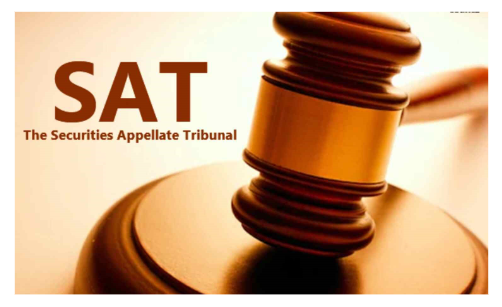
About Securities Appellate Tribunal (SAT)
- Formation and Authority
- SAT is established as a statutory and independent body in accordance with the provisions outlined in the Securities and Exchange Board of India (SEBI) Act, 1992.
- Its primary purpose is to adjudicate on appeals against orders issued by SEBI or an adjudicating officer under the SEBI Act.
- Jurisdiction
- SAT has jurisdiction over appeals concerning orders from various regulatory bodies, including the Insurance Regulatory and Development Authority of India (IRDAI) and the Pension Fund Regulatory and Development Authority (PFRDA), in addition to those from SEBI.
- Composition
- SAT comprises one Presiding Officer and a determined number of Judicial and Technical members, as decided by the Central Government.
- The Presiding Officer and Judicial Members are appointed in consultation with the Chief Justice of India or its nominee, ensuring qualifications such as previous judicial experience.
- Tenure
- The tenure for the Presiding Officer and other members is five years from the date of appointment, with the possibility of reappointment for an additional term of up to five years.
- However, no member shall hold office beyond the age of 70.
- Powers and Functions
- SAT is endowed with powers equivalent to a civil court under the Code of Civil Procedure when adjudicating suits.
- It holds authority to hear appeals on questions of law.
- Appeal Mechanism
- Any person aggrieved by an order of SEBI or an adjudicating officer has the right to appeal to SAT.
- Appeals against SAT's orders can further be filed in the Supreme Court, limited to questions of law.
What is the Securities and Exchange Board of India (SEBI)?
SEBI is a statutory regulatory body established by the Government of India in 1992 through the SEBI Act. It functions to regulate the securities market in India and safeguard the interests of investors in securities.
Source: BS
India's Ethanol Revolution: Advances and Hurdles
In News: The article explores the obstacles and possibilities associated with India's ethanol blending program, designed to diminish the nation's reliance on fossil fuels while fostering the adoption of renewable energy sources.

Understanding Ethanol
Ethanol, an organic compound, is a clear, flammable liquid with a distinct Odor. It is produced through sugar fermentation or chemical processes like ethylene hydration.
- Versatile Uses
- Ethanol finds applications in alcoholic beverages, biofuels blended with gasoline, industrial solvents, and medical and laboratory settings.
- It also serves as a chemical feedstock.
- Ethanol Blending Program (EBP)
- Initiated by the Indian government, the EBP promotes ethanol's use in petrol to reduce fossil fuel dependence.
- It aims to achieve 20% ethanol blending by 2025, contributing to energy self-reliance and environmental goals.
Significance of Ethanol Blending
- Reducing Fossil Fuel Dependence
- Curbs India's vulnerability to global oil market fluctuations.
- Fosters energy self-reliance and reduces oil imports.
- Environmental Impact
- Lowers carbon monoxide and hydrocarbon emissions, improving air quality.
- Supports climate goals with cleaner combustion.
- Agricultural Benefits
- Creates demand for crops used in ethanol production, supporting farmers.
- Boosts rural economies and enhances livelihoods.
- Energy Security
- Diversifies energy sources, reducing dependence on foreign oil.
- Strengthens India's energy security and resilience.
- Economic Advantages
- Stimulates job creation, investments, and innovations.
- Aligns with a sustainable and modern energy system.
- Vehicular Performance
- Improves engine performance due to higher octane rating.
- Reduces knocking tendencies in engines.
Challenges in Ethanol Blending
- Feedstock Challenges
- Varied availability and costs of feedstocks.
- Competition with food security concerns.
- Conversion Efficiency
- Efficiency and yield disparities based on feedstock and processes.
- Impact on economic viability and environmental sustainability.
- Infrastructure Hurdles
- Need for extensive infrastructure for transportation and storage.
- Ethanol's corrosiveness poses challenges in existing pipelines.
- Vehicle Compatibility
- Modifications required in engines for ethanol compatibility.
- Ethanol's lower energy density impacts transportation costs.
Government Initiatives
- Differential Ethanol Pricing
- Varied prices for ethanol derived from different sources.
- Annual revisions based on production costs, availability, and demand.
- Interest Subvention Scheme
- Facilitates setting up new distilleries through interest subvention.
- Encourages expansion of existing ethanol production units.
- Tax Relief
- Lower taxes on ethanol blends compared to unblended petrol.
- Encourages cost-competitive ethanol adoption.
- Incentives for E20-Compatible Vehicles
- Consideration of tax benefits for manufacturers and buyers.
- Promotes the development and usage of vehicles compatible with higher ethanol blends.
Future Strategies for Ethanol Program Enhancement
- Production Boost
- Diversify feedstock sources and support advanced biofuels.
- Encourage research in second and third-generation ethanol technologies.
- Policy and Market Mechanisms
- Gradually raise ethanol blending mandates.
- Establish long-term contracts with oil marketing companies.
- Technological Advancement
- Invest in infrastructure upgrades for efficient supply chain management.
- Collaborate with automobile manufacturers to develop ethanol-compatible engines.
- Public Awareness and Education
- Launch awareness campaigns to educate consumers.
- Ensure transparent labelling of ethanol-blended fuels at petrol stations.
Conclusion
India's Ethanol Blending Program has significantly contributed to energy security, reduced greenhouse gas emissions, and provided economic benefits. Continued efforts and strategic enhancements will propel India towards a more sustainable and self-reliant energy future.
|
UPSC Previous Year Questions Prelims (2010) Q. Given below are the names of four energy crops. Which one of them can be cultivated for ethanol? (a) Jatropha Ans: (b) Prelims (2020) Q. According to India’s National Policy on Biofuels, which of the following can be used as raw materials for the production of biofuels?
Select the correct answer using the code given below: (a) 1, 2, 5 and 6 only Ans: (a) |
Source: TH
Share the article
Edukemy’s Current Affairs Quiz is published with multiple choice questions for UPSC exams
MCQ
Get Latest Updates on Offers, Event dates, and free Mentorship sessions.

Get in touch with our Expert Academic Counsellors 👋
FAQs
UPSC Daily Current Affairs focuses on learning current events on a daily basis. An aspirant needs to study regular and updated information about current events, news, and relevant topics that are important for UPSC aspirants. It covers national and international affairs, government policies, socio-economic issues, science and technology advancements, and more.
UPSC Daily Current Affairs provides aspirants with a concise and comprehensive overview of the latest happenings and developments across various fields. It helps aspirants stay updated with current affairs and provides them with valuable insights and analysis, which are essential for answering questions in the UPSC examinations. It enhances their knowledge, analytical skills, and ability to connect current affairs with the UPSC syllabus.
UPSC Daily Current Affairs covers a wide range of topics, including politics, economics, science and technology, environment, social issues, governance, international relations, and more. It offers news summaries, in-depth analyses, editorials, opinion pieces, and relevant study materials. It also provides practice questions and quizzes to help aspirants test their understanding of current affairs.
Edukemy's UPSC Daily Current Affairs can be accessed through:
- UPSC Daily Current Affairs can be accessed through Current Affairs tab at the top of the Main Page of Edukemy.
- Edukemy Mobile app: The Daily Current Affairs can also be access through Edukemy Mobile App.
- Social media: Follow Edukemy’s official social media accounts or pages that provide UPSC Daily Current Affairs updates, including Facebook, Twitter, or Telegram channels.



